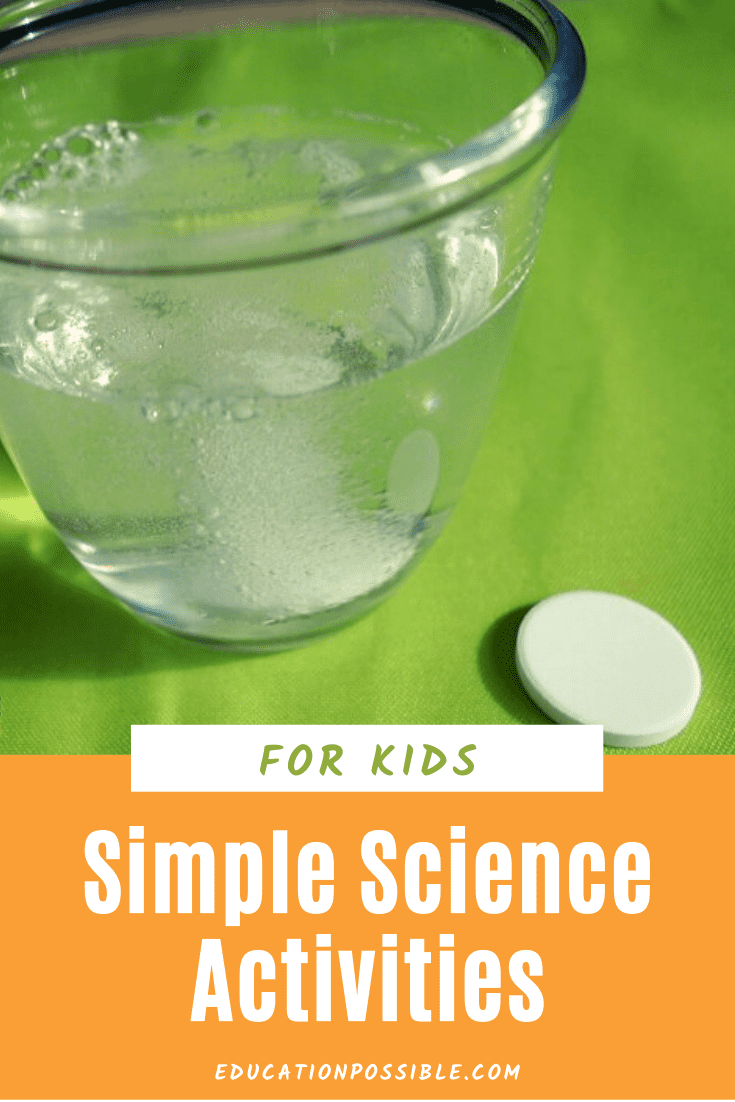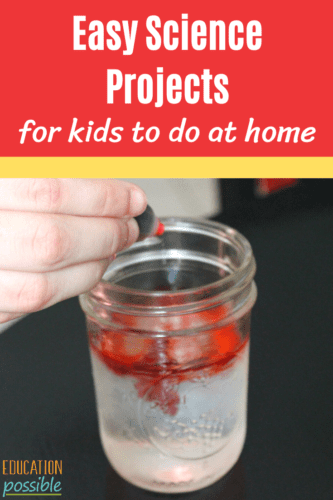Simple Science Activities for Kids You Can Do at Home
If you are looking for how to incorporate simple science activities for kids into your homeschooling day, this tool makes it super easy. The best way to help your tweens understand key science concepts is to set aside the thick, boring textbooks and spend some of your lesson time on experiments. Fortunately, they don’t have to be complicated to be effective.
Small, focused books like this are the best way to make sure your lesson plans include plenty of science activities for middle school. Use the book’s content and the hands-on experiments to expand on topics your older kids find fascinating or to work on concepts they don’t immediately “get.”

I received a copy of this curriculum as well as financial compensation for an honest review. All opinions stated are mine. This post contains affiliate links.
There are some basic things everyone should know in the areas of physical, life, and earth science and the best way to comprehend various theories is to test them. In our homeschool, we’ve found that subjects like chemistry and physics are much easier to understand when we can roll up our sleeves and actually test what we are learning about.
By working through these experiments, your tweens will have a strong understanding of important scientific theories and maybe bust a myth or two.
Mythbusters Experiments for Middle School
I will admit that a lot of what my kids have learned about the scientific investigation has come from one of their favorite shows – Mythbusters. Thanks to some of the creative experiments they’ve seen demonstrated, my children, have come to understand how to start with a question, make some predictions, and then test their ideas.
Although I’m all for having my teens try to disprove common science misconceptions, I’m also one who likes to keep things simple and focused, especially when I’m the one having to help explain some of the information.
So, I have been using a new book to supplement our regular science studies. It’s called Air is Not Oxygen: Essential Science You Should Have Learned…But Probably Didn’t.
It is broken down into short chapters, covering more than 25 scientific concepts including:
- Physical Science – matter, properties of matter, Newton’s Laws, electricity, light, heat, magnetism, sound
- Life Science – structure & function, basic needs, life cycles, ecosystems, food webs, heredity, behaviors
- Earth & Space Science – sun, moon, Earth resources, water, soil, fossils, weather & seasons
- Related Science – investigations, explanations, instruments
These topics have been simplified for clarity and use relatable examples to explain the lesson. For each scientific theory, there are hands-on activities that only require basic materials – many you can find around your house.
For instance, to complete an experiment about heat conduction, all you need is a plastic spoon, metal spoon, a pencil, glass of water, and some butter. That’s it! And from these items, your kids will be able to see for themselves whether metal is a good conductor of heat.
This book will have your students enjoying busting some science misconceptions like Mythbusters.
Simple Science Activities for Kids
Here’s an example of how we supplemented our studies with this book.
We used the Structure & Function topic to add a hands-on activity to our current Botany lessons. By reading the information and examples provided, we reviewed the concept that all living things have structures, and these structures are designed to serve different functions in the organism’s survival, behavior, and growth.
One of the fun activities included filling two cups with water and different colors of food coloring, splitting the stem of a carnation halfway up, placing the end of a stem in each cup, and allowing it to sit and soak overnight. The result was that the stem halves absorbed water from different cups, staining parts of the flower different colors. This demonstrated both the structure and function of the flower stem.
While you may have completed some of these experiments when your kids were younger, redoing them now gives your tween the opportunity to learn “the why” behind the science.

I could easily hand Air is Not Oxygen over to my kids and let them work independently, but we have been having a good time going through the material together. It’s the perfect way to stress the importance of understanding scientific literacy and recognizing common misconceptions, such as “lightning never strikes twice in the same place” and “objects float because they are lighter than water.”
Tweens will enjoy the chance to review concepts they haven’t encountered in a while. Topics that confuse them will become clearer through the conversational tone of the reading, easy to understand explanations and hands-on experiences.
My kids see the activities like these as a nice review of materials we have covered in the past, but honestly, I feel like I’m the one who relates most to the “science you should have learned…but probably didn’t” part of the title. I’m sure I learned them all at some point, but there are plenty I had forgotten. So we are all enjoying the chance to brush up on cool science facts.
It is important that older kids have a firm grasp of basic science before they move on to more advanced areas in high school and this book helps achieve that goal.
Science Activities for Middle School Students
Now that you’ve got your tween excited about science, keep the momentum going with even more fun hands-on science activities for older kids. Build a volcano together, learn about birds as part of a biology study, or learn about the density of liquids and solids.
You’ll find a ton of awesome things to do with your middle schoolers on this science experiments board.


